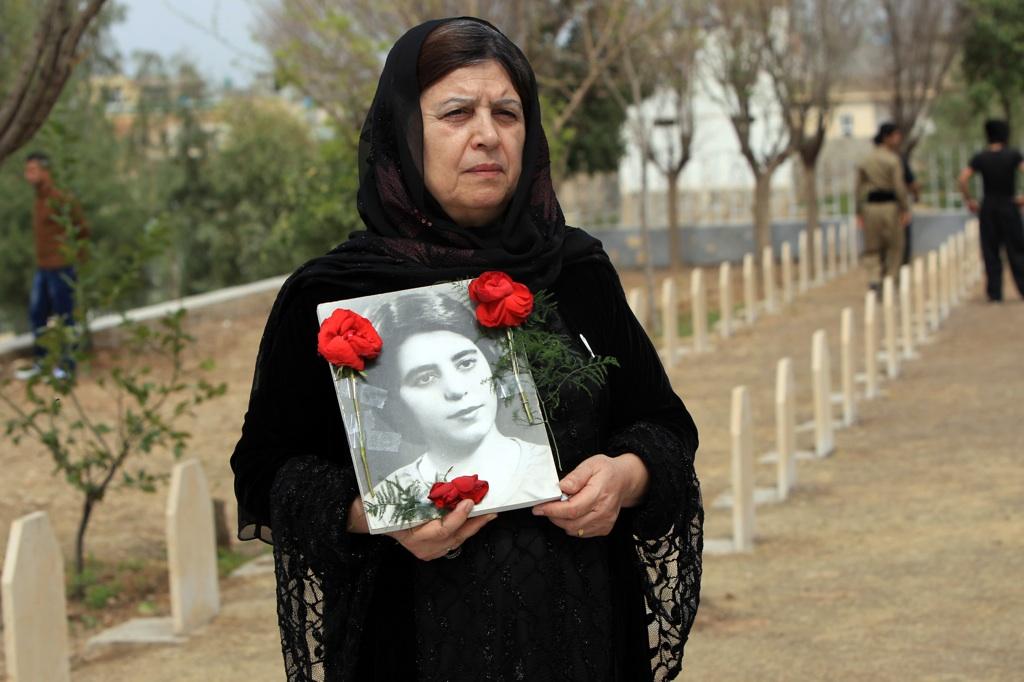Halabja gas attack commemorated 25 years later by Iraqi Kurds
An Iraqi Kurdish woman visits the grave of her sister, who was killed in a gas attack by former Iraqi president Saddam Hussein in 1988, during the 25th anniversary of the attack at the memorial site of the victims in the Kurdish town of Halabja, 300 kms (190 miles) northeast of Baghdad, on March 16, 2013. Many of those paying their respects held pictures of some of the estimated 5,000 people who were killed, most women and children, in what is now thought to have been the worst ever gas attack against civilians.
Iraqi Kurds commemorated the Halabja gas attack Saturday, 25 years after Saddam Hussein's forces unleashed chemical weapons that left an estimated 5,000 people dead.
The solemn commemoration services began with a moment of silence at 11:35 a.m., the time when the mixture of mustard gas and nerve agents were dropped on the small town by planes, Agence France Presse reported.
Many gathered around the Halabja monument holding Kurdish flags and photos of the victims.
"Our family died here," Hounas, a 22-year-old from Sulaimaniyah, told AFP. "We have to learn from this disaster — to forgive, but not to forget."
The March 16, 1988 attack is considered "the most notorious act of chemical warfare in modern times," according to BBC correspondent in Baghdad Jim Muir.
Thousands more got cancer or other illnesses as a result of the chemicals, including 35-year-old Minira Abdul Qader.
“I have been in pain for 25 years, because of my eyes and some breathing problems. I wish I had died the day of the attack,” she told the International Business Times.
"This terrible crime was but one of many in Hussein's Anfal campaign, in which tens of thousands of innocent Iraqis were slaughtered," US National Security Council spokeswoman Caitlin Hayden said in a statement, according to the AFP.
"On this solemn occasion, we honor the memories of the husbands, wives, sons, and daughters who perished at Halabja and throughout Anfal."
More from GlobalPost: Why chemical weapons are so dangerous
